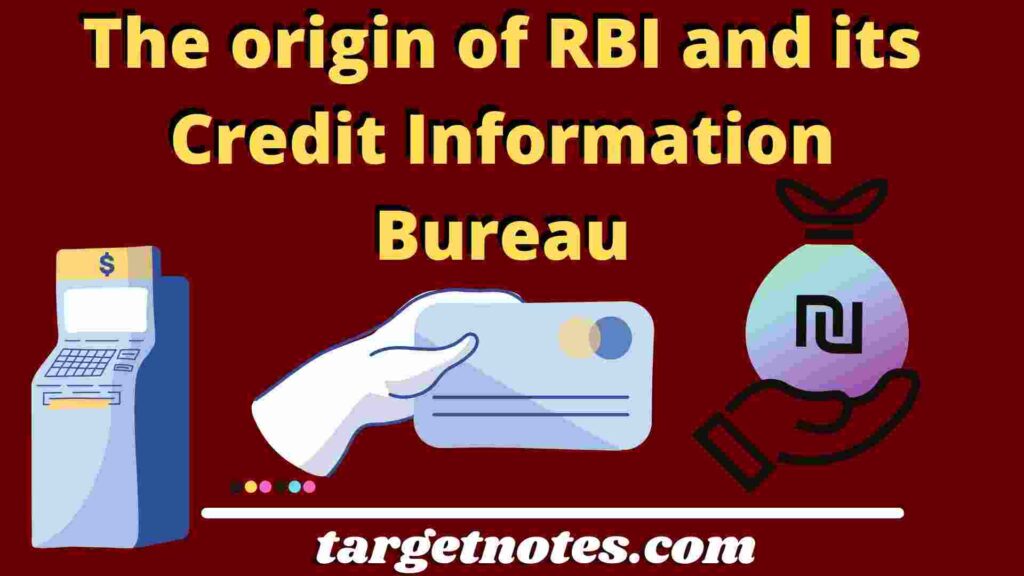
Explain the origin of RBI and its Credit Information Bureau ?
Contents
Origin of RBI
The need for a central bank to control and co-ordinate was felt in 1773 by Hastings. There were other important suggestions for the establishment of a central bank, but it could not take a definite shape until the beginning of the present century. For the setting up of a central bank the three presidency banks were amalgamated in 1921 and the Imperial Bank of India was founded. Since the Imperial Bank of India was performing several functions of the central bank viz. a banker of the government, issue of note etc. It was considered to convert the bank into a full fledged central bank. With the publication of the report of Royal Commission on Currency and Bank (1925), the demand again assumed importance. Hilton Young Commission (1926), felt the dichotomy over currency and credit between the government and the Imperial Bank of India. Inadequate integration of different monetary policies and fiscal policies was the inherent weakness of the country, the Royal Commission on Indian Currency and Finance (Hilton Young Commission) recommended setting up of a central bank by charter. A bill giving to this effect was introduced in the Legislative Assembly in January 1927 but could not take the shape of an Act for constitutional reasons. Indian Constitutional Reform took place in 1933. Consequently the establishment of the central bank known as the Reserve Bank of India was made conditional and free from political influence in the country. A fresh bill was introduced on 8th September, 1933 which was passed on March 6, 1934. The Reserve Bank of India started functioning since April 1, 1935.
Reserve Bank Credit Information Bureau
Reserve Bank of India set up a Working Group in December 2001 to examine the possibility of the CIB executing the role of collecting and Disseminating information on the suit filed accounts, being reported by the banks and notified financial institutions. The Credit Information Companies (Regulation) Act, 2005 and Rules and Regulation issued by RBI has empowered Credit Information Bureau (India) Ltd. (CIBIL) to collect data from lenders and share the some with the group. The bank can submit data to CIBIL without the consent of borrowers. CIBIL can track repayment history of bank customers loans, credit cards and further banking finances. The access to this database is available to officials of banks. CIBIL collects and updates the information regarding the borrowers from credit grantors and then allows to access to its database to search and receive a credit applicant. Thus, CIBII collects commercial and consumer credit-related data and collates such data to generate and distribute credit reports to members.
Related Link
- Describe the various types of money
- Dynamic Functions of Money
- Evils or Demerits of Money
- Importance and significance of money in Modern Economy
- Approaches regarding Definitions of Money and its Function
- Money: Meaning, Definitions and features of Money
IMPORTANT LINK
- What is the Exchange Rate System in India?
- Evolution of foreign exchange market in India
- Meaning and importance of export finance.
- Role of Export-Import Bank in Financing India’s Foreign Trade
- How Commercial banks Export Finance to Overseas Importers?
- Explain packing credit in detail?
- What is Post-shipment credit?
- What is Pre-shipment or packing credit?
- Explain Export Credit in India?
- Institutions Providing Finance and Credit Facility for Foreign Trade
- What is Risk Analysis?
- Explain Political risks in detail? and its Types
- What are the types of Risks. Explain in detail?
- Meaning and Types of commercial risks
- How can we minimize foreign trade risks?
- What are Arbitrage operations?
- Difference between Spot Market and Forward Market
- What is spot exchange?
- Agency agreement: Meaning, Features and Advantages
- Functions of Foreign Exchange markets
- structure of Foreign exchange markets
Disclaimer






